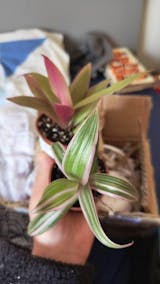



Double Hollyhock - Alcea rosea 'Chater's Double Scarlet' - British Grown Herbaceous Perennial
Scientific Name
Alcea rosea (rose-coloured Alcea plant) 'Chater's Double Scarlet'
Flower: tall stems
Short-lived perennial but will re-seed each year.
Common Name(s)
Hollyhock
Origin
Originates in Southwest China, but was imported to Europe over 500 years ago!
Description
This Double Hollyhock flowers in deep scarlet red, with large, ruffled petals which fill the inside of the flowers, giving it the 'double' name- it's like one flower folded inside another! These flowers grow from a flower spike, a big stem up to 2m high which specifically grows to fill with colourful flowers. They will look great at the back of a flower bed, where their flowers stems will tower over other plants in front... while those plants cover the less-colourful lower stems of the Hollyhock. As a short-lived perennial, they will flower and die back in a year, but will reseed themselves for years to come, so make sure you don't cut them back until after the plant has developed seeds.
Months of Interest
June to September
Pruning Tips
N/A- just remove rust-flecked leaves in summer and the flower spikes once the flowers have faded.
Wildlife Value
Butterflies
Positioning
Full sun
Water
Water in dry weather
Soil
Moist but well-drained soil; chalky, sandy or loamy soil is ideal.
Food
Hollyhocks do best in nutrient-rich soil; if your Hollyhock's seeds are yellowing, feel free to add extra nutrients to give it a boost!
Pet-safe?
Yes, although a lot of nibbling won't be good for your furry friend or the plant!
Sprouts Top Tips
Hollyhocks can be susceptible to rust fungus, so keep an eye out for the orange-yellow splotches and remove any affected leaves to stop it spreading.






